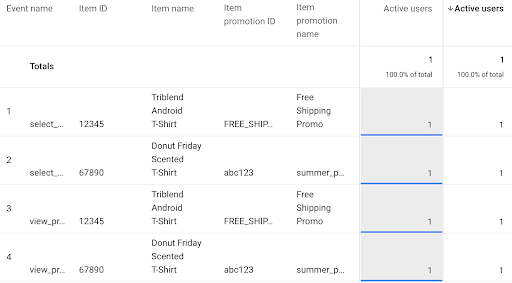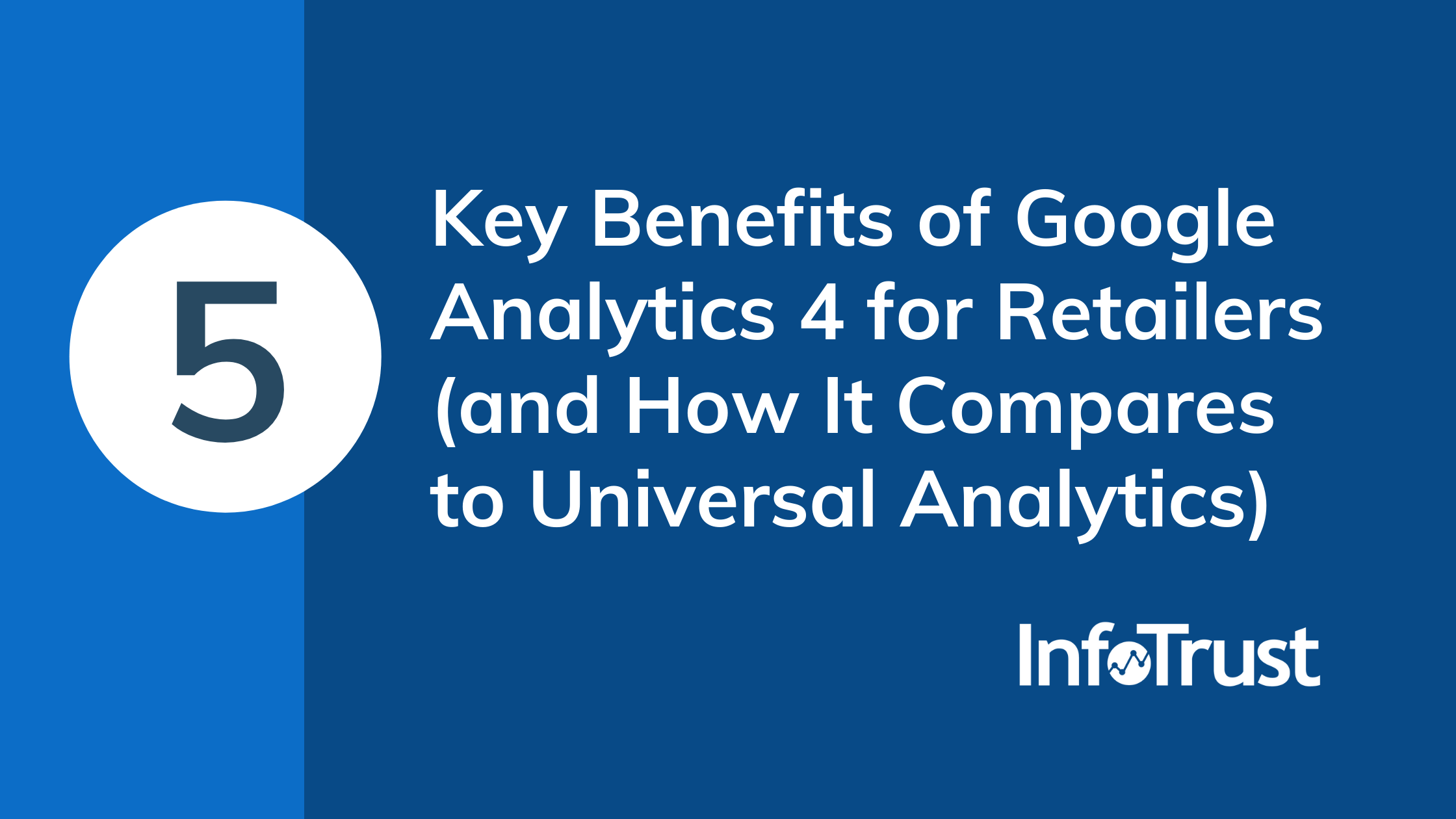As we enter 2022, you might be hearing a lot of talk around migrating to Google Analytics 4 (GA4), dual-tagging your website, or finding more durable digital analytics solutions. Maybe you have even gotten ahead of the game and you are already on your way to tagging your site with GA4. Wherever you are in the process, one of the main questions we hear from our clients is, “What new benefits and features are there in GA4?”
While new features and capabilities have and will continue to roll out this year, GA4 offers an even stronger view of your digital performance across web and app.
Key Benefits
1. More flexible, scalable, and universal data model
In Universal Analytics (UA), hits included “pageviews,” “screenviews,” “events,” “transaction,” “item,” and “social.” GA4 is simplified and uses an event-based model, so all of the hits previously mentioned for UA would now simply be an event.
Similarly, enriching your events has become easier in GA4, as each event has an event name, and can also include up to 25 custom parameters with each event. These custom parameters are translated to custom dimensions and metrics and can be event-scoped or user-scoped.
As a retailer, there are often a myriad of properties you want to know about your products, customer, or overall shopping experience. Event parameters in GA4 allow you to provide more of these details directly in the platform.
In UA, your custom events have four possible fields: event category, event action, event label, and event value. Creating and grouping events can be more rigid when events may require more than three text-based fields to effectively understand.
Greater flexibility and efficiency in the GA4 data model is also shown in new ways to send data together in a single hit, including eCommerce data. For example, in GA4 you are able to stitch product data to promotion impressions and clicks.
Example:

2. Easier custom reporting options
One of the challenges we hear most often in building custom reports is navigating mixing scopes. In UA, there are four scopes to data, including user, session, hit, and product-scopes. Combining scopes with the intention to build out complicated or detailed reports will often leave you with invalid reporting errors. When using the Google Analytics API, users can often create reports that combine metrics and dimensions with different scopes (such as Pages and Sessions) which can lead to misleading reporting.
The flexible data model in GA4 also allows for more straightforward custom reporting, especially using Explorations. Explorations allow you to create a variety of custom report types directly from the Google Analytics interface, including free-form, cohort, funnel, segment overlap, path, user lifetime value, and individual user explorations.
One specific benefit to retailers is the ability to more freely build funnel reporting in the Explore section. UA checkout behavior reporting only allows for one funnel; however, many retailers offer more than one checkout type (standard, guest, quick order, etc.). In GA4, custom funnels are not limited only to GA4 Enterprise (paid) accounts, and will allow you to create more customized reporting to understand your unique user flows from browsing to shopping to purchase.
3. In-product machine learning, including predictive audiences and data-driven attribution
Using the event-based model, driving new insights using machine learning directly inside of Google Analytics is easier than ever. Similar to UA, GA4 is able to create custom audiences based on information about the user or their session. However, GA4 also offers new predictive audiences which are automatically shared with any Google Ads accounts linked to your property.
These predictive audiences are especially valuable to retailers, and include likely 7-day purchasers, likely 7-day churning users, likely first-time 7-day purchasers, likely 7-day churning purchasers, and predicted 28-day top spenders, which are only available in GA4.
Additional in-platform machine learning capabilities also allows companies that are currently using the free version of UA to use data-driven attribution (DDA) models in GA4 in the near future. DDA modeling uses your own data to create a customized attribution model which incorporates time from conversion, device type, number of ad interactions, the order of ad exposure, and the type of creative assets.
4. Greater allowable hit volume
Hits, or interactions on your website/app, are limited to 500 per session by default in UA. What this means is that if a session contains more than 500 hits, the hits that exceed that limit are not sent to Google Analytics. Especially for enterprise retailers that may be tracking a variety of engagements on their site or app, this can cause issues where some of the core events you may want to track, such as a purchase, are never processed and stored based on these limitations.
With Google Analytics 360 in UA, you can request this limit be increased to 2,000 hits per session. This certainly can help to mitigate previously mentioned issues when approaching limits, but for some enterprise brands is still not enough to ensure crucial hits are sent to Google Analytics.
In GA4, there is currently no limit on the number of hits that can be sent per session. This allows retailers to add additional tracking that they may find valuable, but previously hesitated to implement due to hit limits per session.
5. Automatic tagging through enhanced measurement
One new feature unique to GA4 is enhanced measurement. This feature allows you to tag a handful of events with no code changes needed, including:
- Scrolls
- Outbound clicks
- File downloads
- Site searches
- Video engagement
- Video starts
- Video completions
- Video progress
When you enable a new data stream, you will be prompted to decide which of the above events you’d like to automatically tag. Getting these new events into GA4 is as simple as toggling the option on and off.
Besides the event itself, Google also passes additional details about the event through automatically collected parameters. You can find the exhaustive list of event details and parameters included in enhanced measurement here.
A Final Word
While you are likely not ready to completely close the door on your UA property, we strongly recommend dual-tagging, or having both UA and GA4 running on your digital properties. Getting a head start on collecting GA4 data will not only provide more complete historical lookbacks in the future, but will also allow you to reap the benefits of the above features!


